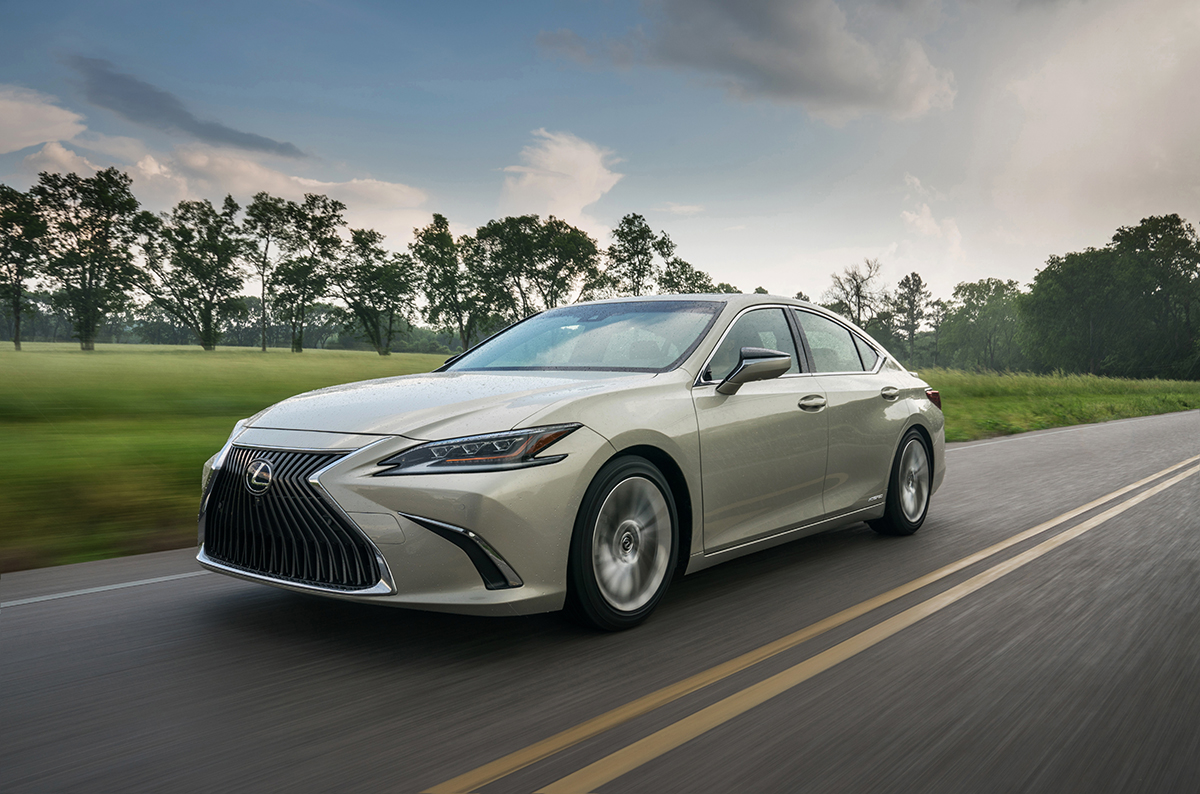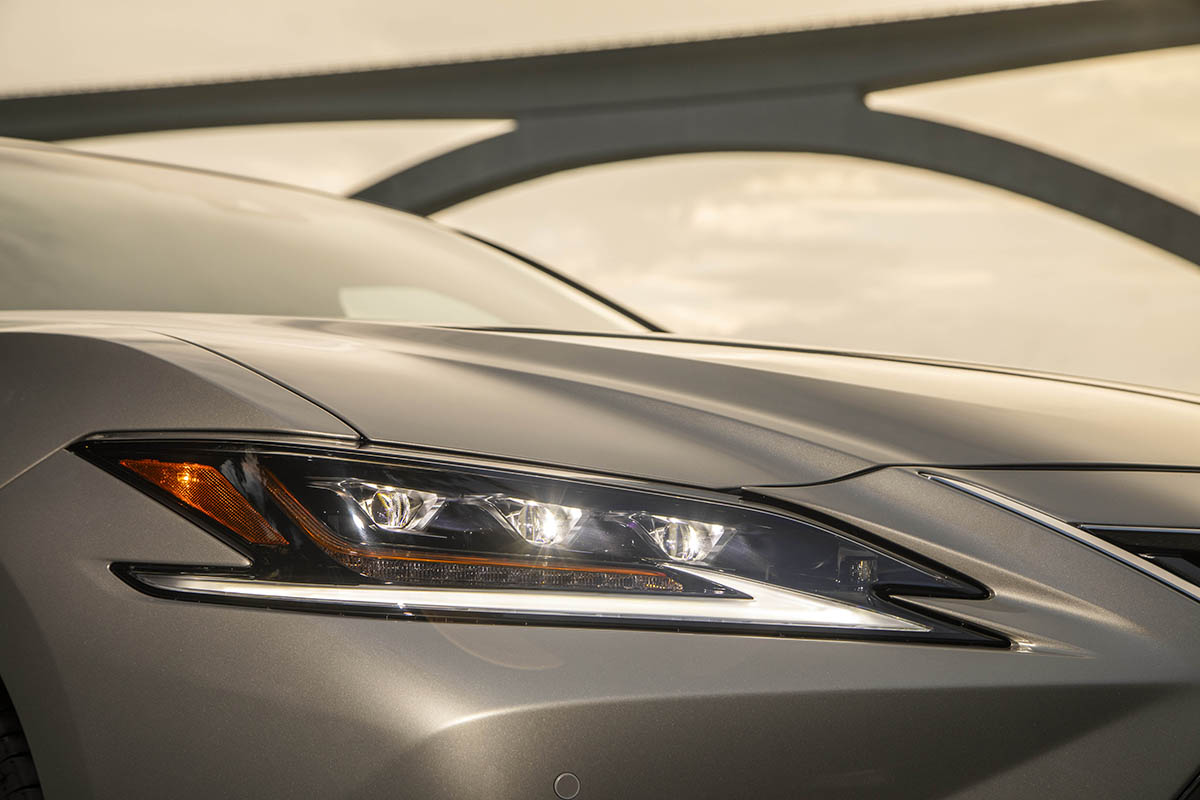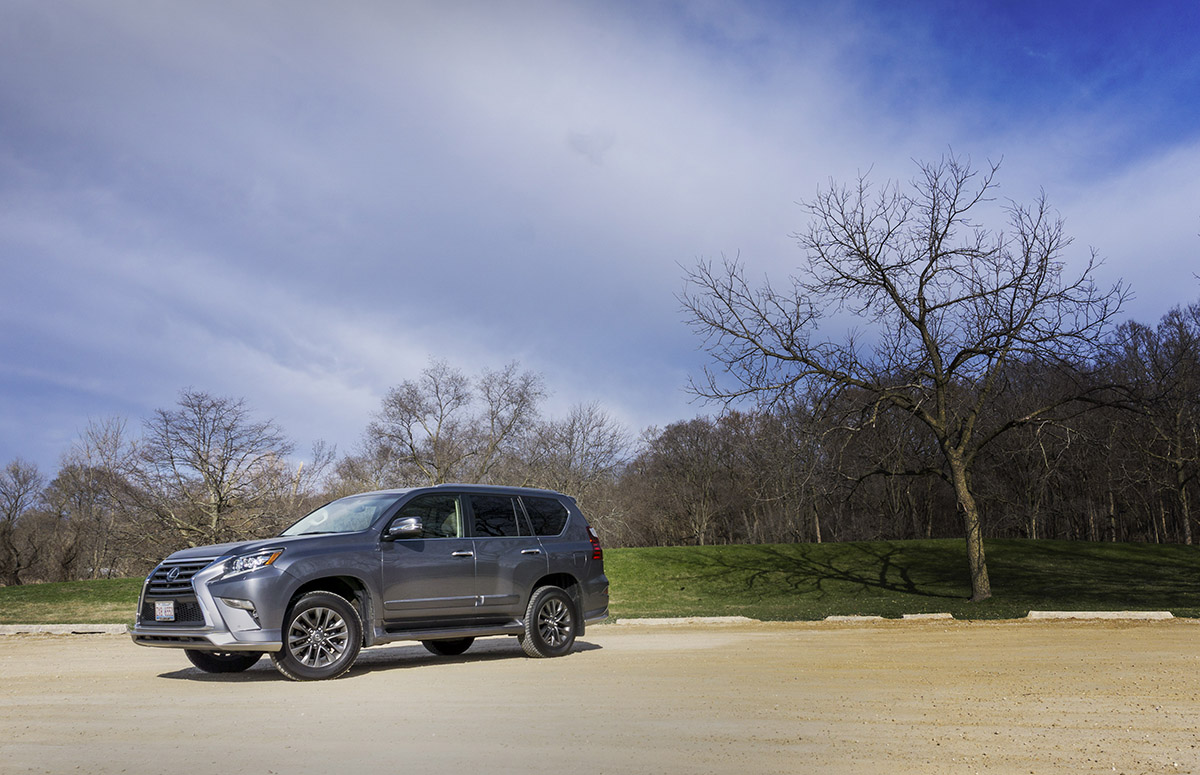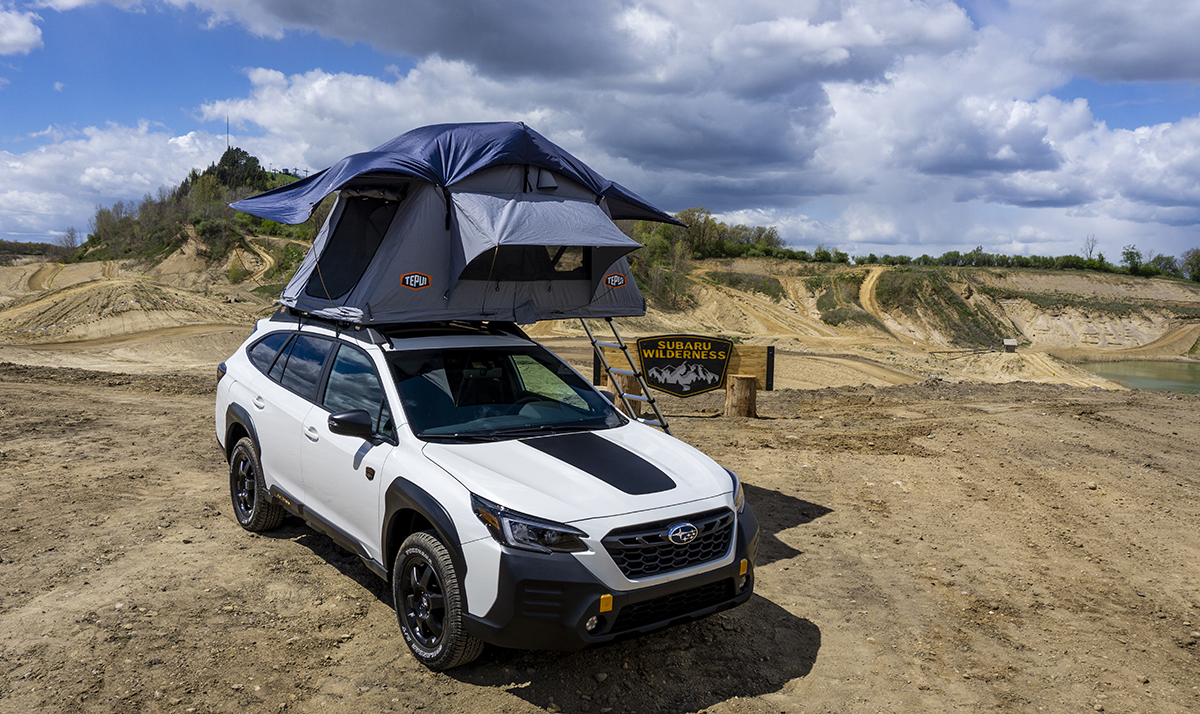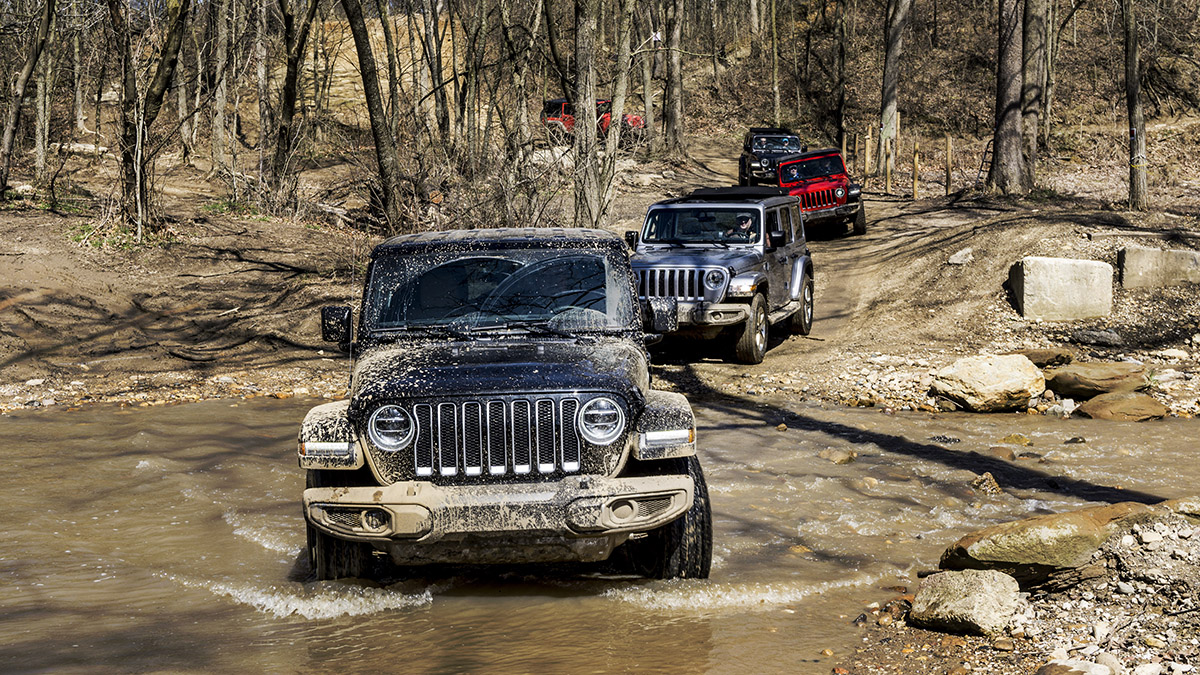Driven: 2019 Lexus ES 300h, upgraded, enhanced, and engaged.
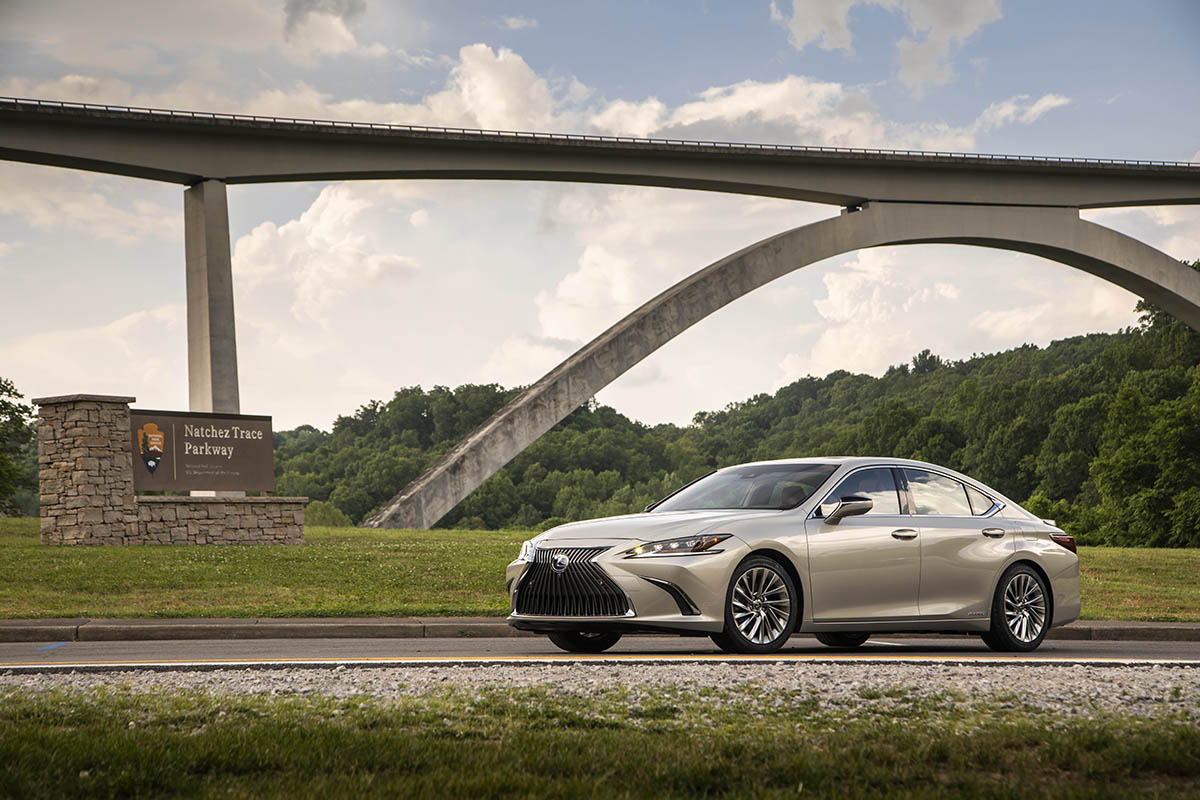
When you mention Nashville to most people images of The Opry, rhinestone suits, hot chicken, and Baptists come to mind. But if you’ve visited the city recently you’ll see a very different picture. Global cuisine, music that goes well beyond country, NHL hockey, and a number of international businesses populate the city and have changed both its landscape and culture significantly since I first traveled to Music City to produce soundtracks for Chevrolet commercials in the late 1980s.
Not that you can’t find country music and rhinestones and hot chicken and Baptists, they’re still there. It’s just that Nashville now has more.
That’s the same feeling I got when I slipped behind the wheel of the all-new, 2018 Lexus ES.
If Lexus was guilty of building boring cars (it was) then the ES was Exhibit A. Previous generations of the ES have been blandastic midsize sedans with all the personality of a comatose sloth and all the excitement of a Pat Boone concert. If what you were looking for was a quiet, comfortable, reliable, luxury car with middling performance, wallflower design, and uninspiring driving dynamics, this was the car for you. Apparently, a lot of people were looking for boring cars because the ES is Lexus’ all-time, best-selling sedan including over 50,000 last year.
After spending the day driving several versions of the seventh generation ES, however, I can say with confidence that “was” is the operative word in the previous paragraph. Is it the most exciting car on the road today? No. But it’s no longer the Ambien-laced snoozefest that’s been lulling people into purchasing with its monotonous perfection.
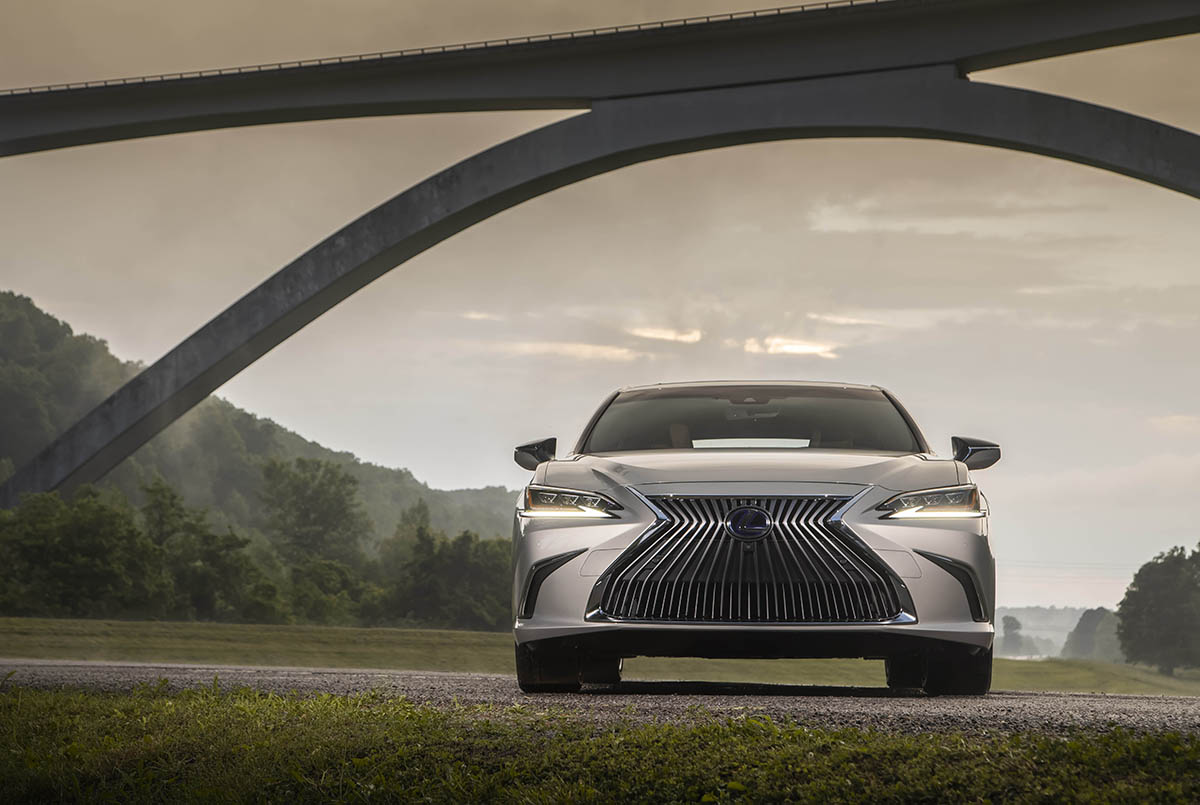
Let’s start with the obvious, its design. The ES is the last vehicle in the lineup to fully embrace all the trademarks of the new Lexus design language that graces the LC, LS, and other models. Love it or hate it, you can’t argue that it’s not distinctive. From the signature spindle grille to the L-shaped LED running lamps, sculpted sides, and tapered rear end, the ES is undeniably a Lexus. It is longer, wider, and lower than the outgoing model with the wheels pushed further to each corner giving it a much sportier appearance and more confident stance. It has a lot more in common with its Lexus brethren the LS and LC than the cousin it shares a platform with, the 2019 Toyota Avalon.
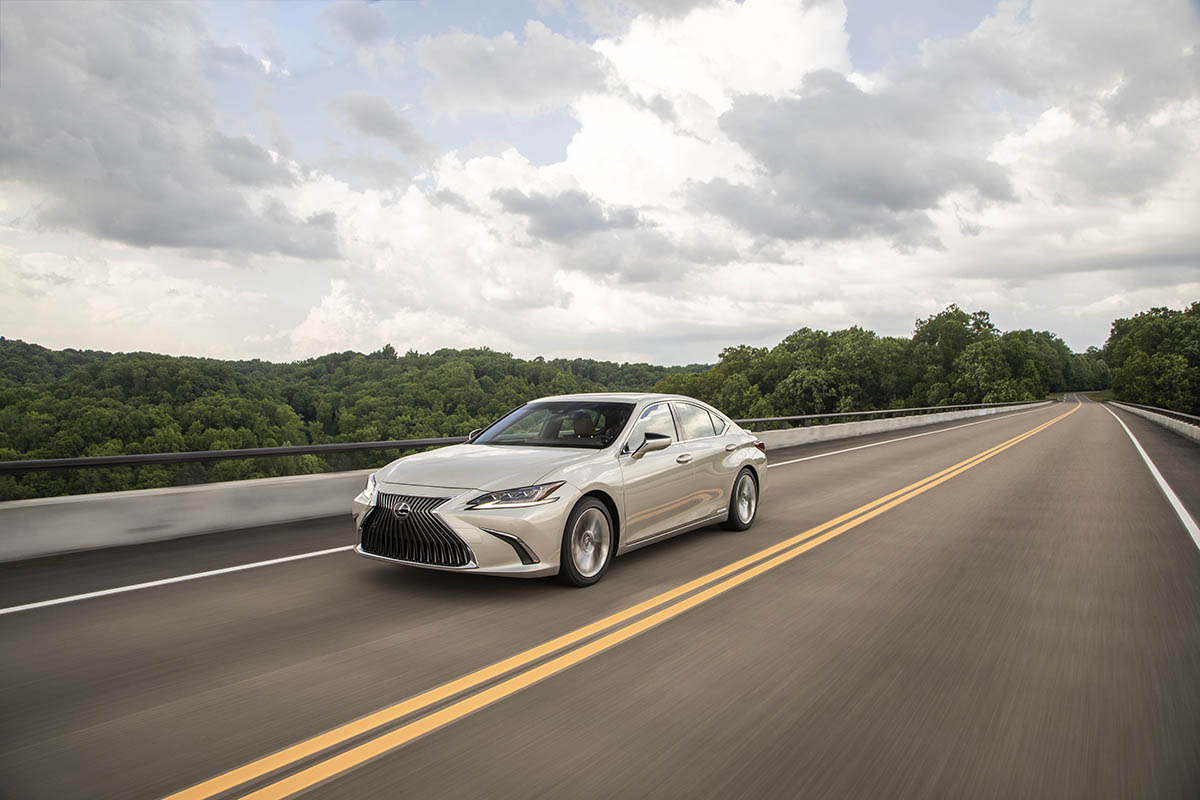
Interestingly it may be the rise of sedan-killing SUVs and Crossovers that has allowed Lexus to make the ES more engaging to drive. In a conversation I had with the President of Lexus International, Yoshihiro Sawa, he said, “With functionality supported by SUVs now, the sedan can become more sporty and personalized.”
The new GA-K platform is both lighter and more rigid than the outgoing chassis thanks to the judicious use of high-strength steel, structural adhesives, and laser screw welding. The result is a car that is more tunable. In standard form, the front-wheel-drive ES is quieter and more responsive than the car it replaces. It still retains a lot of that Lexus composure with a ride that’s more compliant than that of a BMW 530 or Mercedes E Class. Opt for the F Sport version with its adaptive variable suspension and when you have the Sport or Sport+ plus drive modes engaged, the experience is surprisingly satisfying. You won’t mistake it for an LC500, but the ES 350 F Sport held its own when I pushed it through some twisty bits on some lightly trafficked Tennessee back roads. All models offer a drive mode select system which affects the transmission shift points, throttle response, and steering feel. Only the F Sport, however, offers suspension adjustments, so if you’re really interested in a firm, sporting ride, this is the one to get.
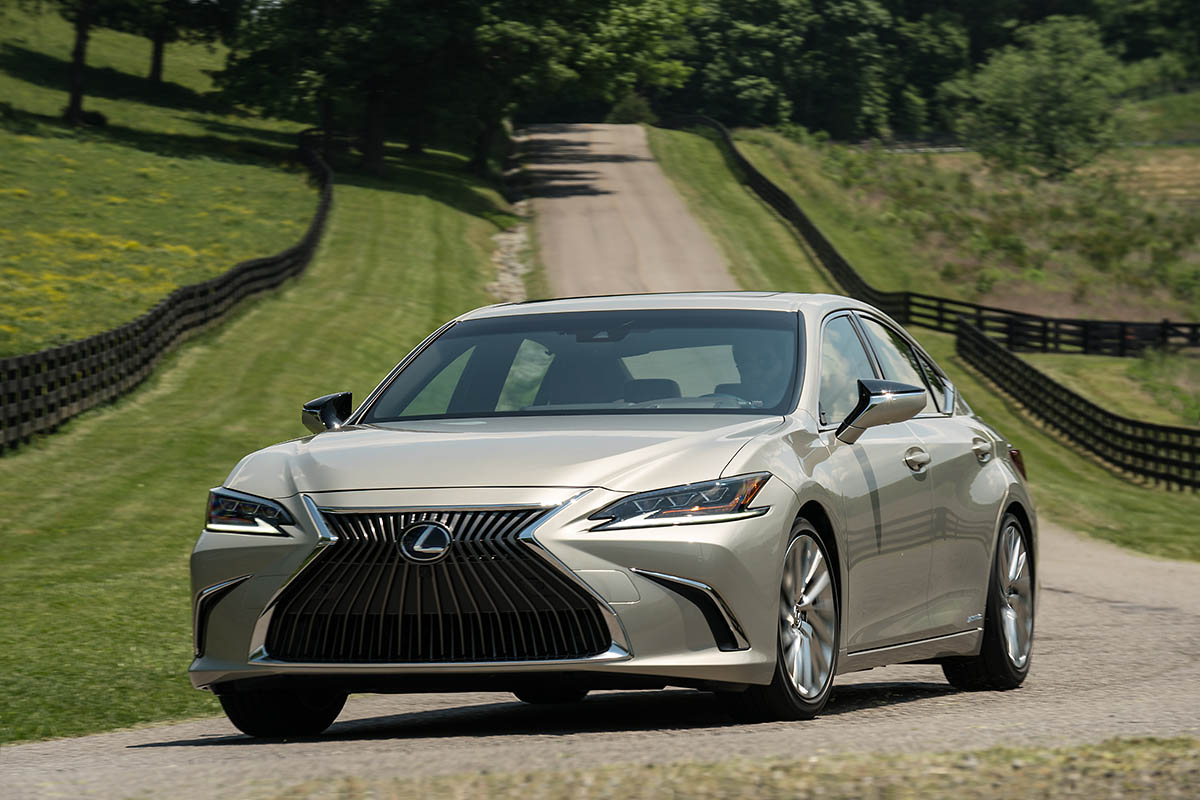
You get two engine choices with the ES. The first is a completely reworked, direct-injected, 3.5-liter V6 that revs smoothly to 6,600 RPMs and makes 302 horsepower. Torque is also up about 7% to 267 lb.-ft. Despite the increase in power, the ES 350 is also more efficient achieving 22 mpg city and 33 on the highway. Put the car in eco mode and thanks to throttle response and shift points designed to squeeze extra distance out of every drop of petrol, it drives comfortably, quietly, and very relaxed. It’s almost as soporific as the outgoing ES. But toggle up to sport mode and the engine comes to life. I know it’s not the point of this car, but it now scoots from 0-60 in a very credible 6.6 seconds.
A good chunk of the performance and efficiency improvements is due to the all-new 8-speed automatic transmission with direct shift. In addition to closer gear ratios for better acceleration, it also has a taller final drive ratio allowing the engine to run at lower RPMs at highway speed. As previously mentioned you can alter the transmission’s performance by selecting various drive modes, but it also has embedded software that understands the driver’s intent by constantly monitoring speed and throttle position. An example of this came when I wanted to make a quick pass around a slow-moving truck on a two-lane. When I buried the accelerator, the transmission dropped directly from 5th to 3rd, optimizing the acceleration for the pass.
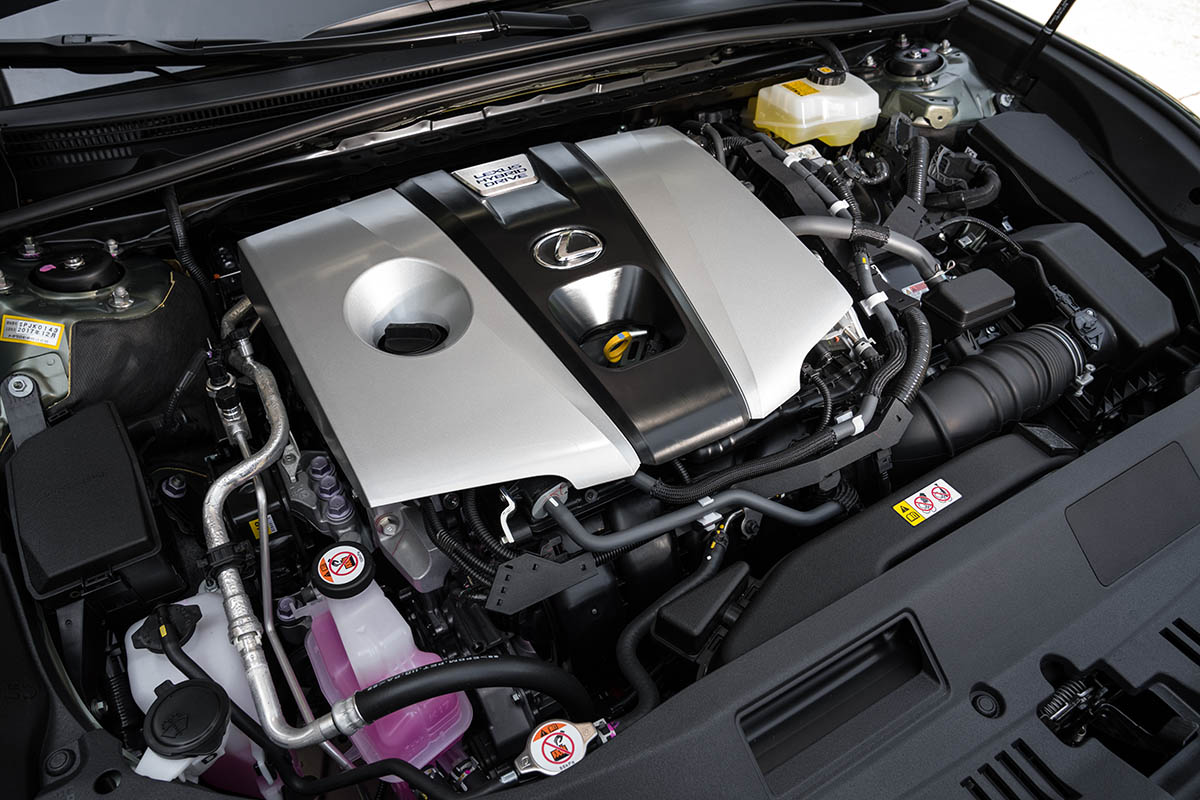
The second engine lives under the hood of the ES 300h and it is, of course, a hybrid system with a new, all-aluminum, 2.5-liter, four-cylinder engine mated to a more compact electric motor and driving a redesigned CVT transmission. Power and performance are adequate and what you’d expect from a car designed for mileage, not for speed. You do have the option of putting the transmission into manual mode and using paddle shifters to toggle through six simulated gears, but having done it, why would you? Just keep the ES in normal and enjoy the wallet-pleasing 44 miles per gallon Lexus claims it delivers. EPA numbers on the ES hybrid should be available soon.
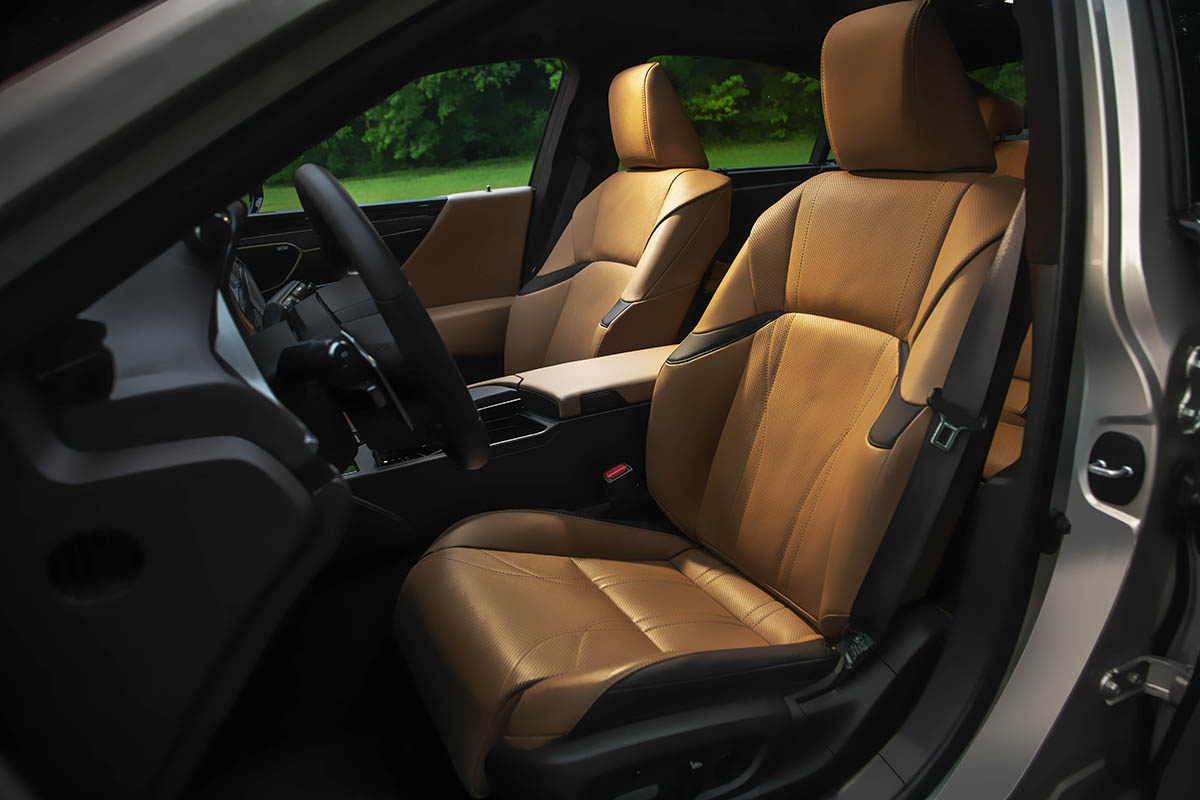
The biggest improvement in the ES, however, is something everyone can enjoy. Lexus continues elevating the comfort and design of its interiors to a level that has put everyone else in the category on notice and the ES is no exception. Taking themes developed on the spectacular LC and LS interiors, it brings Lexus craftsmanship to a broader audience. Interior fit and finish is one feature shy of flawless. That damned trackpad still serves as the main interface for the infotainment system, though Lexus has thankfully included analog buttons and dials for the radio and HVAC systems. Everything else, from the available heated and cooled leather seats to the finely polished wood trim options to the brilliant Mark Levinson premium audio, are best-in-class.
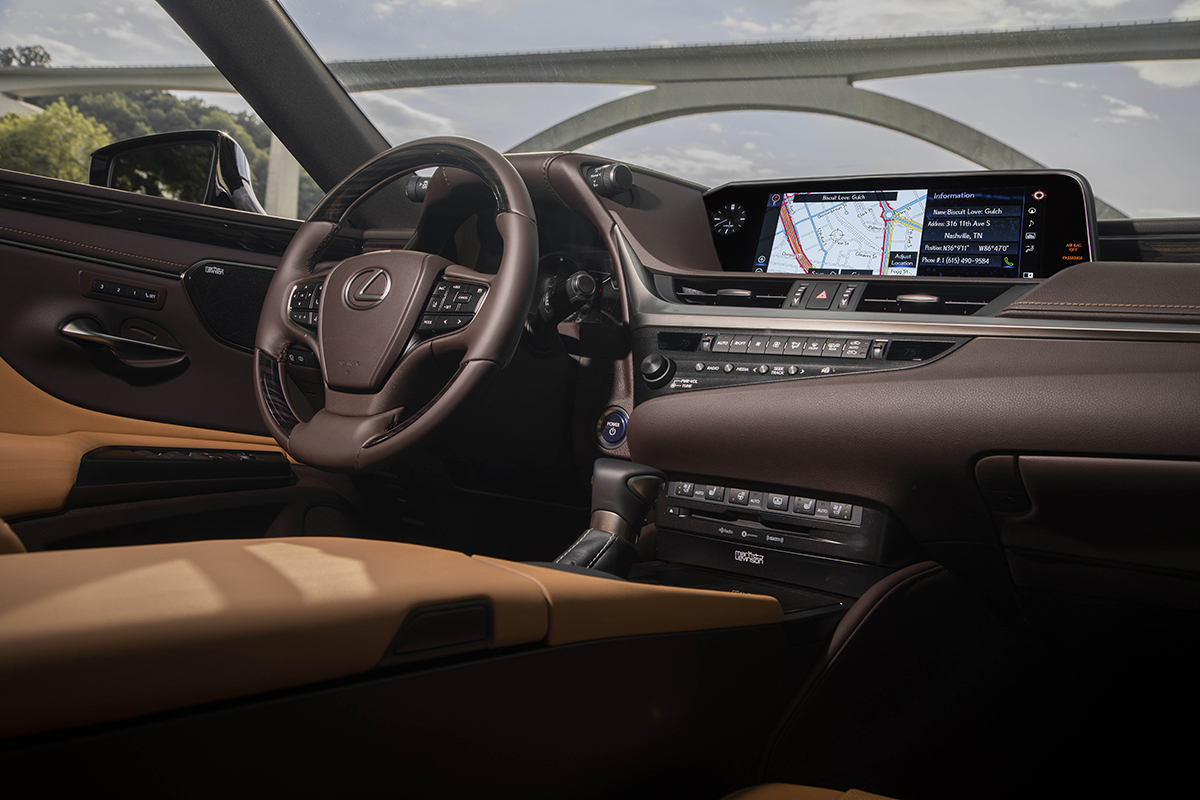
Pulling up to the sleek and modern Kimpton Aerston Hotel after a day of driving the ES on the urban streets, heavily trafficked freeways, and open back roads, it became clear that this is a newer, more contemporary expression of Lexus than the outgoing ES. It’s a sedan with more soul and personality. Since it’s a Lexus, it’s also one you should be able to drive for a decade or more without any issues at all. That absolutely boring, predictable reliability one thing about the Lexus brand I hope will never change.
